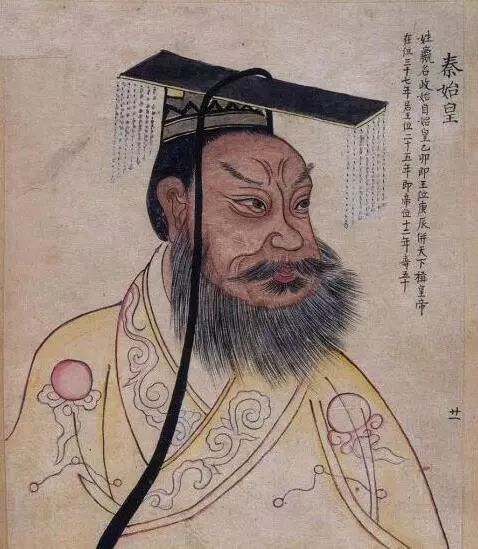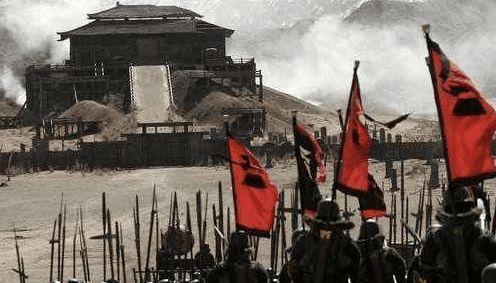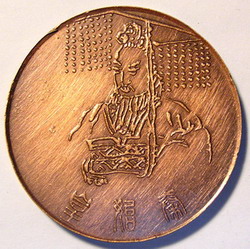Qin Dynasty Lay the Foundation for Great Unification
6 min readThe Qin and Han dynasties,from BC 221 to 220 AD,were the first unified multiethnic centralized states in Chinese history,laying the foundation for a great united empire.
In BC221,Qin continued expansion outward after merging the six states.It suppressed Baiyue in the southeastern coast and southern China and the ethnic groups in southwestern areas and established administrative organs there for unified management.Qin’s troops also attacked the Huns in the north,regained the Great Bend of the Yellow River to migrate and cultivate,and constructed the Great Wall to consolidate the northern defense.Finally,Qin established an unprecedented vast empire with a population of 20 million multiethnic people.

Ying Zheng,after unifying the six states,called himself“Shihuangdi”(the first emperor)because he thought”his merits are better than the Five Emperors(Huangdi,Zhuan Xu,Di Ku,Tang Yao and Yu Shun)and the land under his rule islarger than those of Three Kings(Fu Xi,Nu Wa and Shen Nong)”and established supreme power.Emperor Shihuang of the Qin Dynasty,insisting on and developing thesocial reform evolving from the Spring and Autumn and the Warring States periods,implemented a series of measures to intensify the centralized sovereignty.
With respect to the political system,Emperor Shihuang of the Qin Dynasty believed the fief system was the source of the ceaseless wars since the Spring and Autumn Period and thought”it’s time to set up armies because peace has returned and the country is unified.”He accepted the suggestion of Li Si to award his sons and the officials who performed deeds of great merit but not enfeoff them,and further established a complete set of bureaucratic administration systems at both central and local levels.

The emperor controlled the country’s military power, and the throne was inherited by his descendants from generation to generation. At the central level, there were three chief ministers and nine departments. The “three chief ministers” referred to the prime minister, military minister and supervision minister. The prime minister assisted the emperor in handling political affairs and led all theother officials. The military minister assisted the emperor in military affairs, an the supervision minister was responsible for supervision and law enforcement as well as literature management. The three ministers were not subject to one another andall obeyed the emperor’s orders. The nine departments included the administrative organizations at the central level and those in charge of royal affairs. The system established imperial power as supreme, and the prime minister as the leading official.A1l the officials were responsible for their own business, and for laying a foundation for the organizational pattern of ancient Chinese central government.
Two levels of administrative organizations, namely prefectures and counties, were established nationwide, shaping local bureaucratic administration systems.A prefecture was the higher-level administration organization for the central government directly governing the local. The supreme executive of the prefecture was named the prefecture governor (Junshou). The Juncheng (prefecture governor’s assistant) helped the prefecture governor handle administrative affairs, criminalpunishment and prison affairs, while the Junwei (prefecture governor’s assistant officer) was in charge of military affairs and public security of the prefecture. Under the prefecture, county governments were set up. The responsibilities of the county executive, county executive’s assistant and county executive’s assistant officer were similar to those of the officials at the prefectural level. The officials of the prefecture and the county were assessed, appointed and dismissed by the central government. Under the county level, there were the basic organization township and Li(administrative units of 25 neighboring households). Among the township officials, Sanlao was responsible for education, Sefu was responsible for case hearing and taxation and Youjiao was responsible for public security.
The country governed the people and levied taxes through the three chief ministers and nine departments as well as administrative organizations at variouslocal levels,and the individual household became the basic unit of society in the country.

In the economic sphere,Emperor Shihuang ordered landlords and yeomen who owned land to make household registrations based on the actual land occupation situation. The country then practiced area-based taxation.Thus,private ownership of land was confirmed by law to protect the advanced landocracy economy mode.Before the unification of the Qin Dynasty,the currencies of different vassal states had different shapes,sizes and weights,and the measuring units were not the same,which hindered the development of nationwide commodity exchange and tax collection. In BC 221,Emperor Shihuang unified the currency and promulgated metrological standards to strengthen the economic ties among regions and promote commodity economy development,which was helpful for the country’s economic unity.
After unification,Qin removed the barricades built by the six states,unified vehicle specifications and built a network centered around its capital Xianyang(northeast of today’s Xianyang,Shaanxi).During the unification of the south of the Five Ridges,the Lingqu Canal was dug to link the Yangtze River and the Pearl River systems.A”five-Chi-wide”valley road was built in the hills from today’s Yibin,Sichuan to Qujing,Yunnan.These measures ensured the smooth communication of political decrees and army dispatch,promoted economic and cultural exchanges among the regions and ethnic groups and forged solid material foundation for a unified state.
Before unification,the languages and characters of the state areas were different.After unification,Emperor Shihuang regulated the Xiaozuan font as the standard for the whole country.It helped the country in terms of political decree implementation and cultural exchange and greatly intensified the regions and ethnic groups’sense of identification and belonging to Chinese culture.In the succeeding2,000 years,written Chinese maintained a unified form,having an extremely profoun influence on the concentration and consolidation of a unified multiethnic country.
After the unification,the Qin Dynasty also absorbed relevant rules and regulations of the former six states to formulate a legal system of Qin,which covered a wide range of areas including criminal laws,procedure laws,civil laws,economic laws and administrative laws.
In BC 213,some conservative Confucians insisted“no sustainable governance would be achieved without imitating ancient people and following long-established rules.”Li Si firmly criticized those opponents.Emperor Shihuang accepted the suggestion of Li Si and further strengthened ideological control.He only allowed public schools and prohibited private schools,ordered the historiographers to burn historical records and all folk books including The Book of Odes,The Book of History and other books of all schools except The History of Qin and the books on medicine and forestation.He also regulated that those participating in private discussions on The Book of Odes and The Book of History shall be executed and the entire family of those disagreeing with the current situation and politics shall be exterminated.In BC 212,some scholars and alchemists blamed Emperor Shihuang ofbeing“greedy for power”and”glad at severe penalty.”More than 400 people werearrested and buried alive under the crime of defamation.Although the action of burning books and burying scholars alive suppressed opposition and safeguarded thecentralized reign,the cruel manner caused a huge loss to Chinese culture and had a negative political influence.
Most of the wars and projects initiated by Emperor Shihuang had great and progressive significance.However,the urgent deployment,heavy taxation,rigid penalties,especially the construction of palaces and tombs,brought a heavy burden and suffering to the people.In BC 210,Emperor Shihuang died of illness during atour of inspection.Emperor Ershi of the Qin Dynasty succeeded to the throne.The ruling classes struggled with each other,resulting in heavier taxation,crueler punishment and a rapidly intensifying social division.In BC 209,a large-scale peasant uprising led by Chen Sheng and Wu Guang took place,which heavily shook the rule of the Qin Dynasty.In BC 207,the Qin Dynasty ended under the attack of Xiang Yu,Liu Bang and other forces.After the four-year Chu-Han War,Liu Band defeated Xiang Yu in BC 202 and set up the Han Dynasty in Chang’an(today’s Xi’an),known as the Western Han Dynasty in history.
Though the Qin Dynasty ended only after the ruling of two emperors,the new systems established by Emperor Shihuang made pioneering contributions to the development of China as a unified multiethnic country and took Chinese history on a new path in the following 2,000 years.








